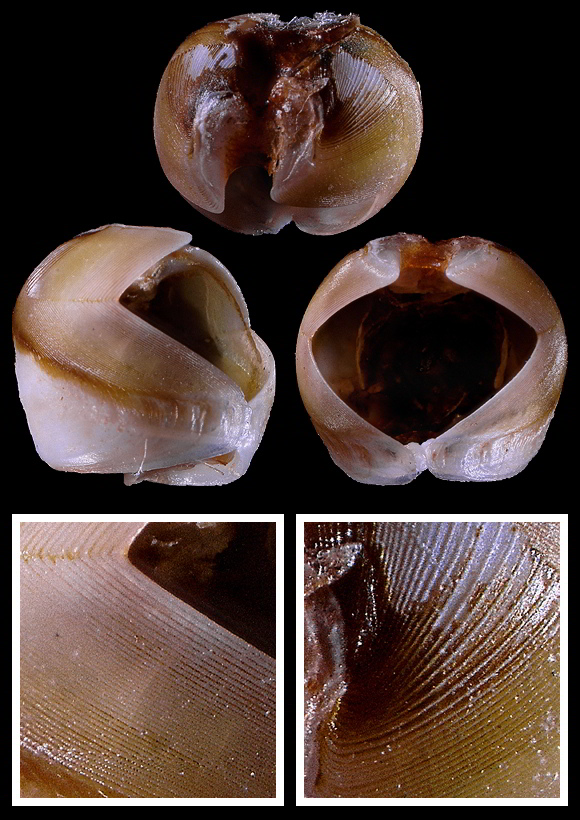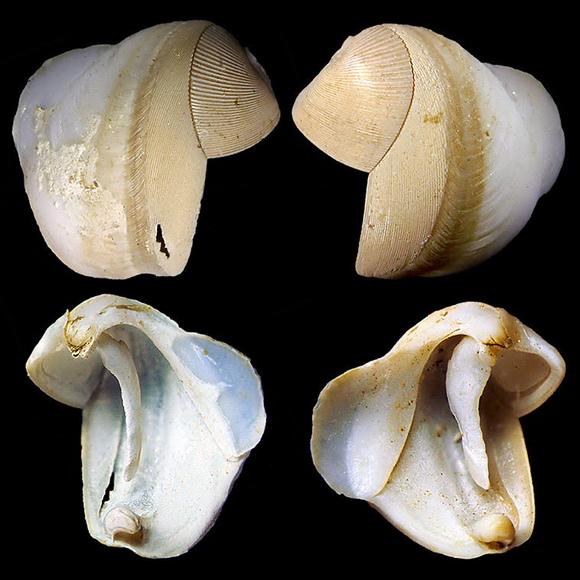
« Each valve is composed of three lobes: anterior, medial and posterior. The anterior lobe [near the center of the image] bears parallel straight striae provided with some 4000 teeth, and has a large apophysys […] that embeds the adductor muscle. The latter plays as a plunger and is used as anchorage by the animal during the period of drilling. The medial lobe is divided in two parts: the anterior part shows straight striae, much more narrowed than on the anterior lobe; the posterior part has curved striae and also bears some 10.000 teeth. Eventually, the posterior lobe is ear-shaped » (DORIS).
In drift wood, Port-la-Nouvelle, Occitania, S. France. 7mm. Original pictures provided by S. Clanzig (FR).
– (CC BY-NC-SA) –
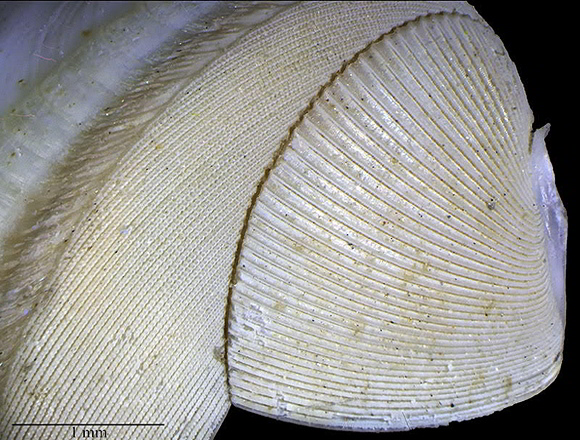
– (CC BY-NC-SA) –
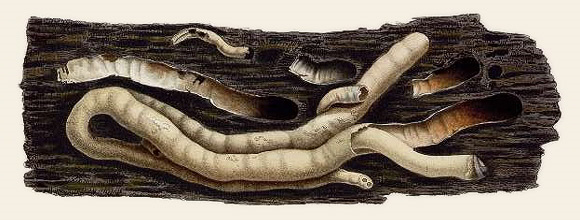
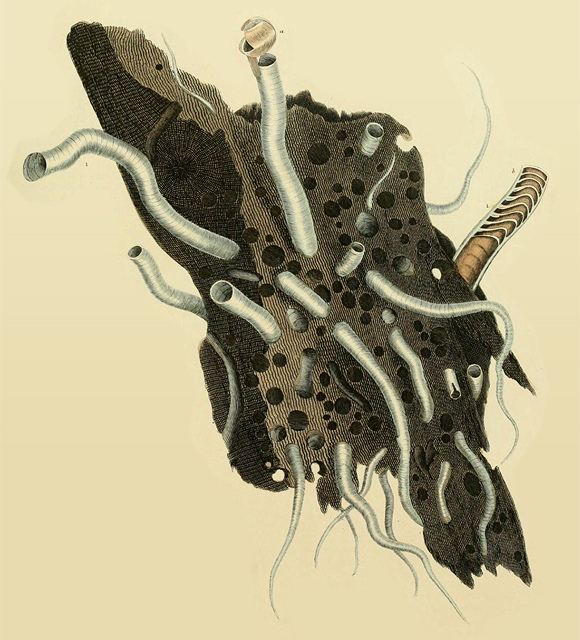
« This bivalve is seated on the wider end of a thin, white, flexuous, brittle, nearly circular, and rather abruptly tapering tube, which is internally provided with transverse septae, reaching half way across the tube. »
